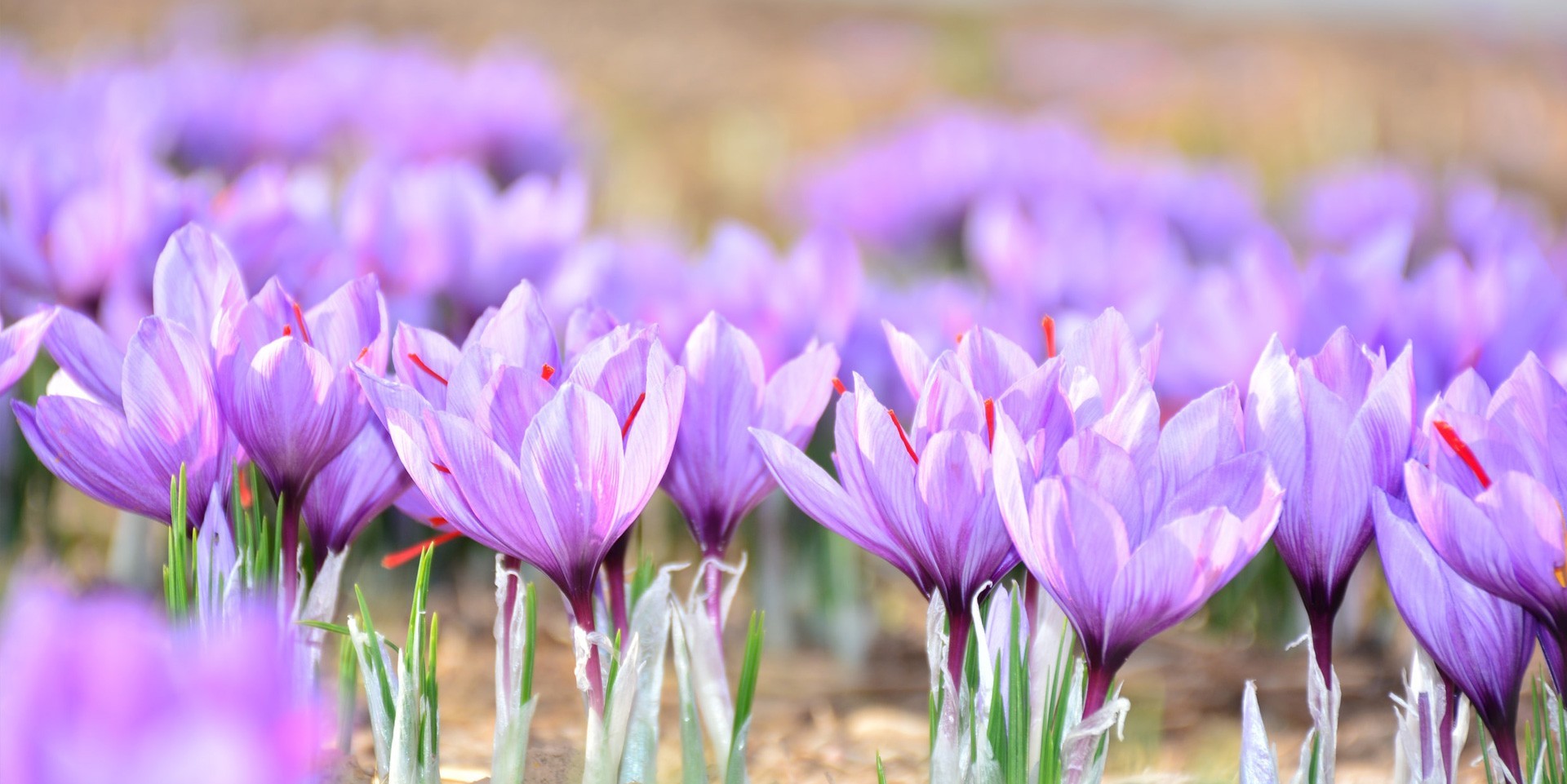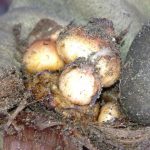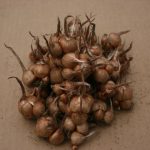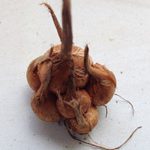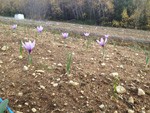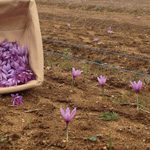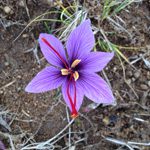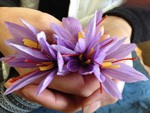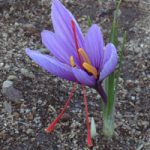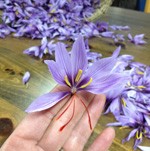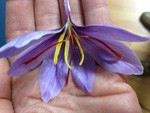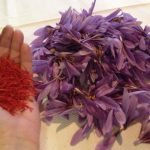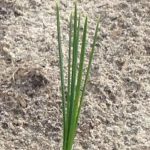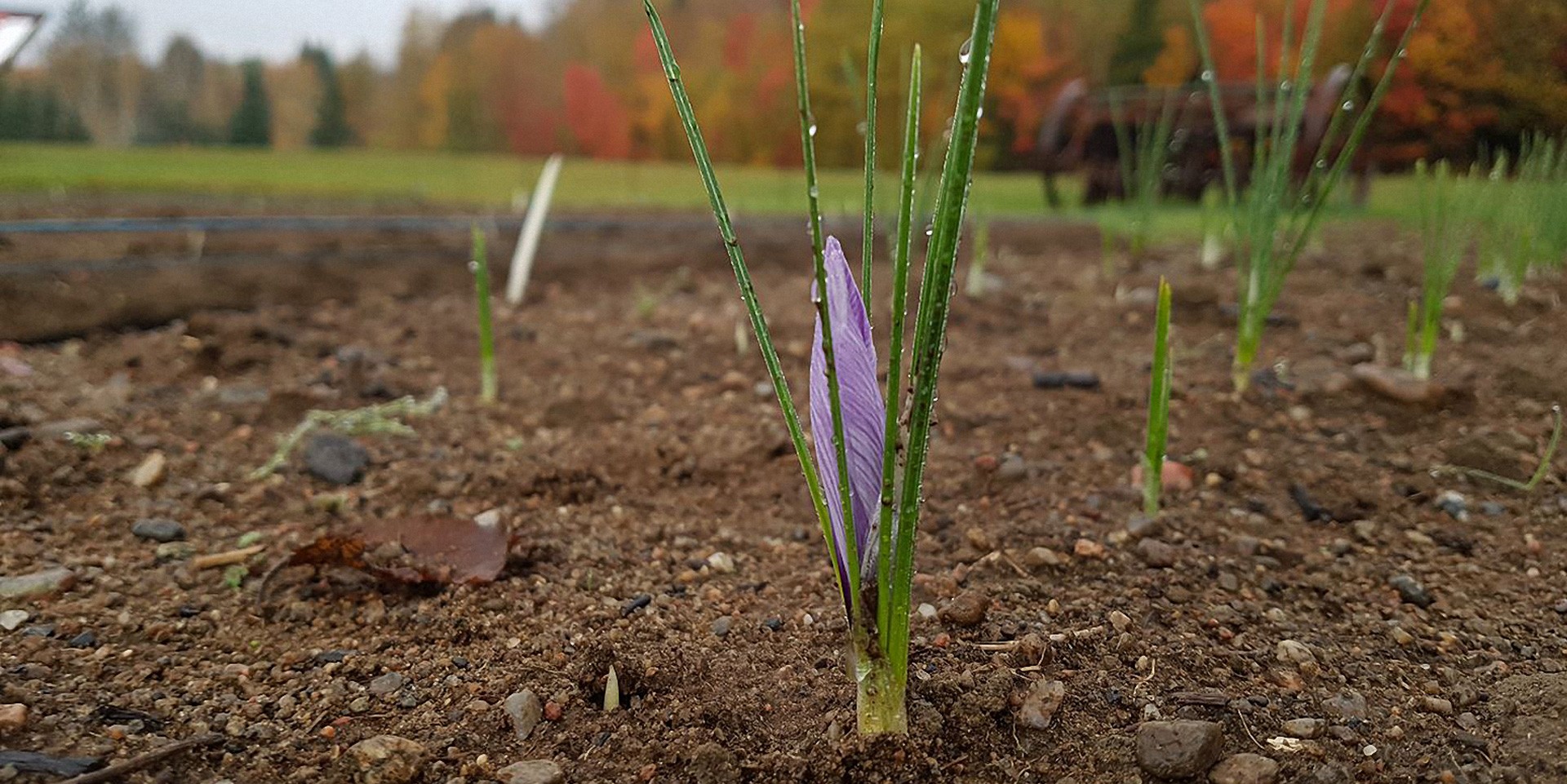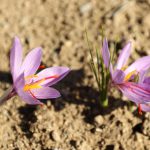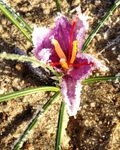01. The Plant
Saffron Crocus (Crocus Sativus) is a perennial bulbous plant of the Iridaceae family whose flowering is in Autumn/Fall. Since the saffron flower does not produce viable seeds, it depends on human intervention for its survival and reproduction.
The flower is coloured from pale purple to dark purple (occasionally white), and consists of three petals and three sepals. The three stamens, bright yellow, are opposite the sepals. The pistil is composed of an elongated style and finished at the level of the flower by three bright red stigmas. Saffron is only made up of these dried stigmas.
Because the Saffron Crocus (Crocus Sativus) is a hybrid variety, sexual reproduction of the plant is impossible. The multiplication of the species is therefore only by vegetative reproduction or division of the bulb. This means that all the saffron in the world shares the same genetic heritage and would come from a single bulb.
An inverted plant, the saffron flower blooms in the Fall and develops its foliage after flowering to late Spring and then goes dormant throughout the Summer. This vegetative rest lasts until the end of August.
02. The planting
Saffron Crocus (Crocus Sativus) bulbs are planted in July to mid-August, during their dormant period. In areas further South, planting can continue until the first week of September. Late planting does not allow sufficient rooting to ensure flowering as early as the following October. Planting is done manually after having taken good care to prepare the land.
03. The Flowering
Towards the end of August, when the night temperature stays below 17 degrees Celsius, the bulbs wake up. The flowering period begins after the 3rd heavy Autumn rainfall. The first flowers begin to emerge when the night temperature reaches no more than 8 degrees Celsius. The flowering period lasts 4 to 6 weeks, between early October and late November with a peak towards the end of October.
Saffron flower buds emerge from the soil protected by a thin white sheath reminiscent of silk. The sheath then opens in sunlight and dies within 24 to 48 hours. If it rains, it stays closed and waits for thinning to occur. The flowers then bloom before the foliage or accompanied by foliage, depending upon the soil. This flowering, as sudden as it is magical, is the happiness of any saffron farmer!
04. The Harvest
Magical moments… The hard work throughout Summer and long harvest hours to come are forgotten, for a moment, at the sight of the small shoots, still closed, with their fragile little purple buds that stand proudly waiting to bloom, revealing their precious treasure. A moment of happiness to see every morning before starting the harvest, which will be long and laborious.
The flowers are picked in the morning as soon as the dew evaporates, one by one, manually. They are placed in baskets which are brought to our workshop where we prune and dry the pistils. If new flowers appear during the day, a second harvest will be made in the late afternoon.
Pruning consists of spreading the petals (corollas), gently grasping the pistil and cutting it just before the white style, at orange level, as much as possible without separating the 3 stigmas.
Drying is the most important and delicate step of the harvest as it determines the quality of the saffron. Several methods are used around the world; in electric ovens, gas ovens, wood ovens, pollen dryers, outdoors (sheltered or not) from the sun, etc. We use the technique of rapid drying by intake of heat, in small quantities, in order to preserve color, flavour and aroma. After drying, the pistils should be light, stiff, almost brittle, and blood red.
Saffron is stored in small, preferably glass, jars. The quality of saffron changes rapidly in the presence of light or oxidizing agents in the air, therefore, containers should be airtight, and made of glass rather than metal, cardboard or plastic. Natural corks do not allow oxygen to pass through, while plastic or metal caps cause a rapid and sudden oxidation of the spice.
All stages of harvesting must be carried out on the same day of harvest. These operations are repeated every day during the flowering period and despite the hard work involved, ‘joie de vivre’ (zest for life) reigns in the fragrant workshop of saffron scents, which even nascent, gives joy and euphoria.
05. The Growth
The foliage develops a little before, during or just after Autumn flowering as the plant enters its growing period. It will produce 3 to 10 new bulbillas that will reach the size allowing them to produce flowers in 1 to 2 years. Until March, they accumulate reserves and need low temperatures to do so. In the Spring, the new bulbs and bulbillas grow, the mother bulb dries out, giving them room. In June, with the first heat, the foliage fades and the plants enter their vegetative rest period.
06. Quebec Saffron
Saffron bulbs are easily grown in the Quebec climate. It is comfortable in all seasons; the cooling of the soil in the Fall being responsible for triggering its flowering, the cold of Winter being necessary for its growth, the rains of Spring for its reproduction and Summer temperatures keeping it warm during its vegetative rest. The saffron flower is unique, and it loves the cold, which makes it bloom while the other flowers have long faded.

